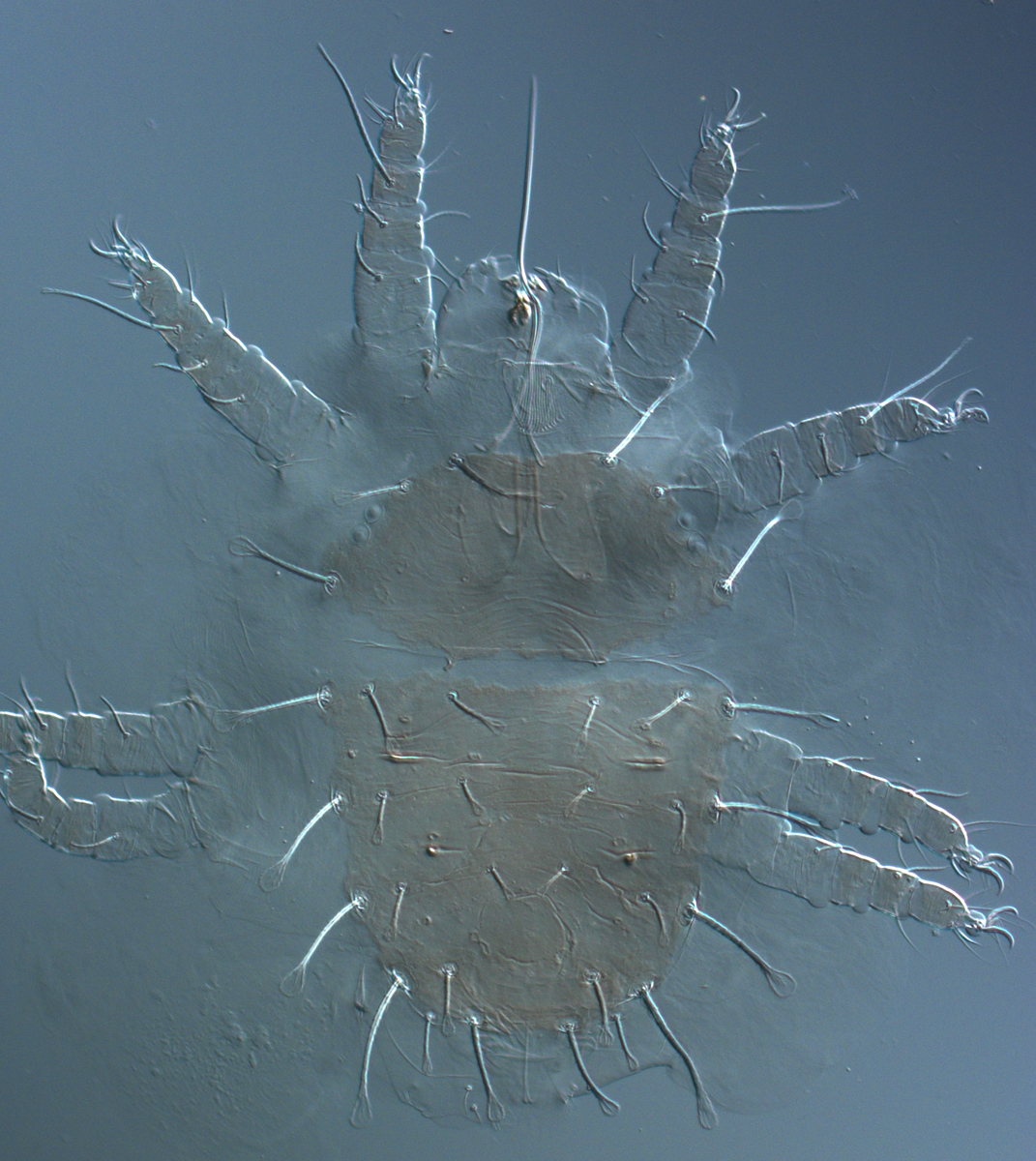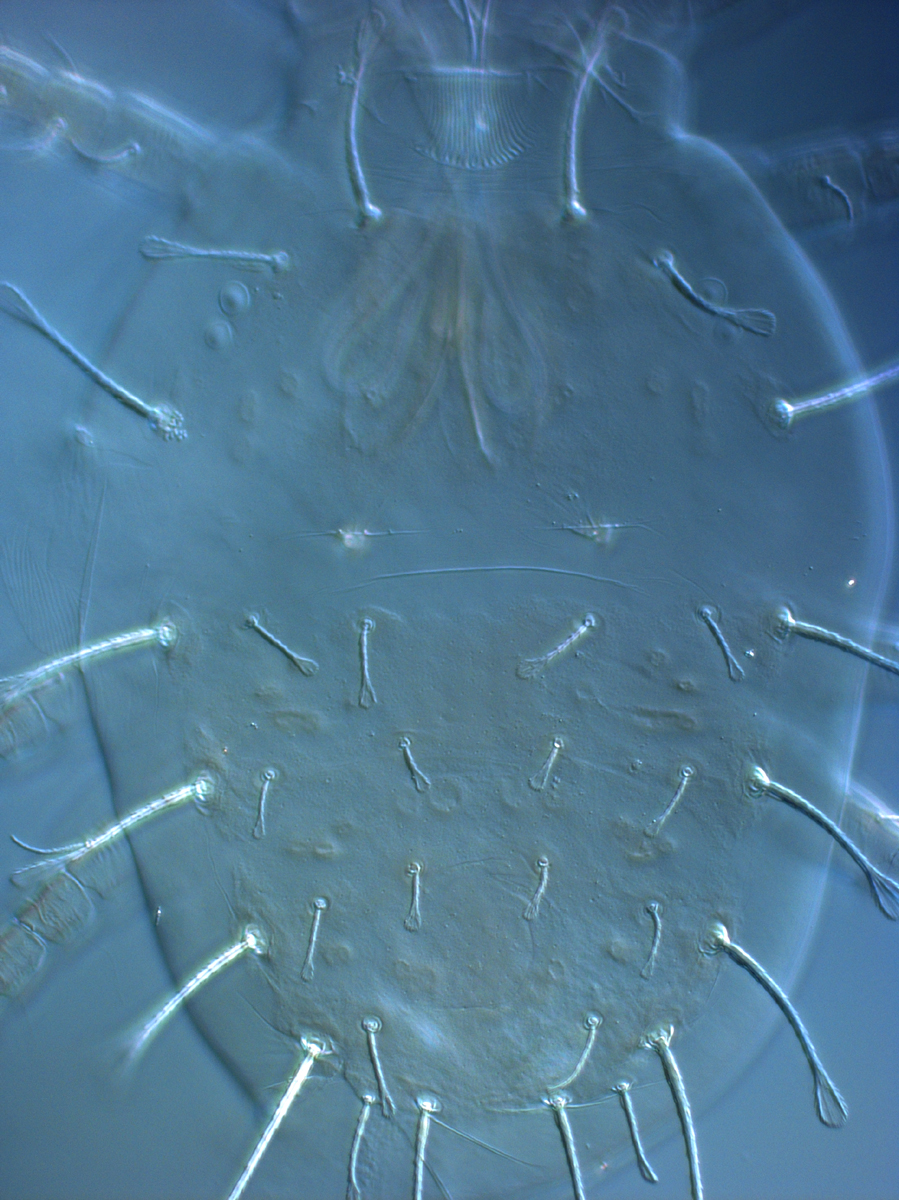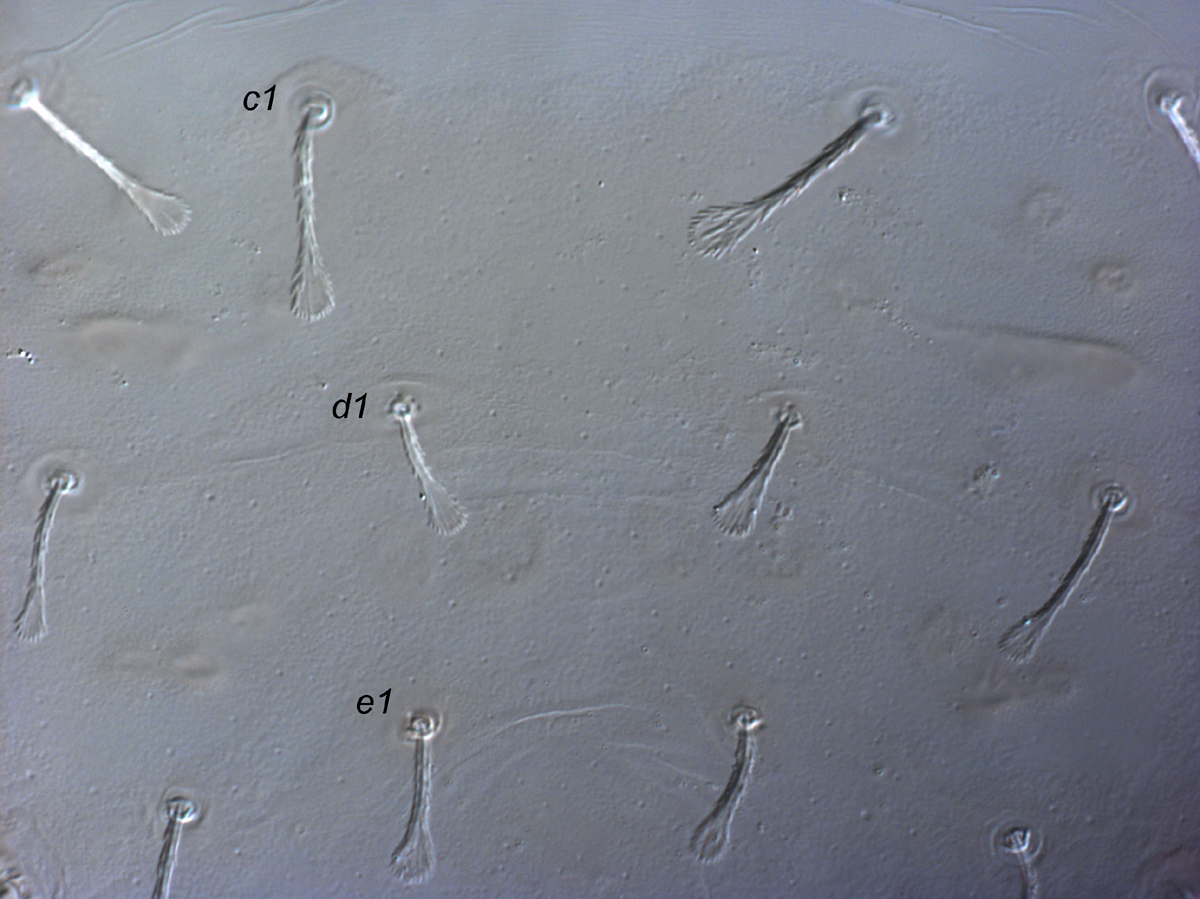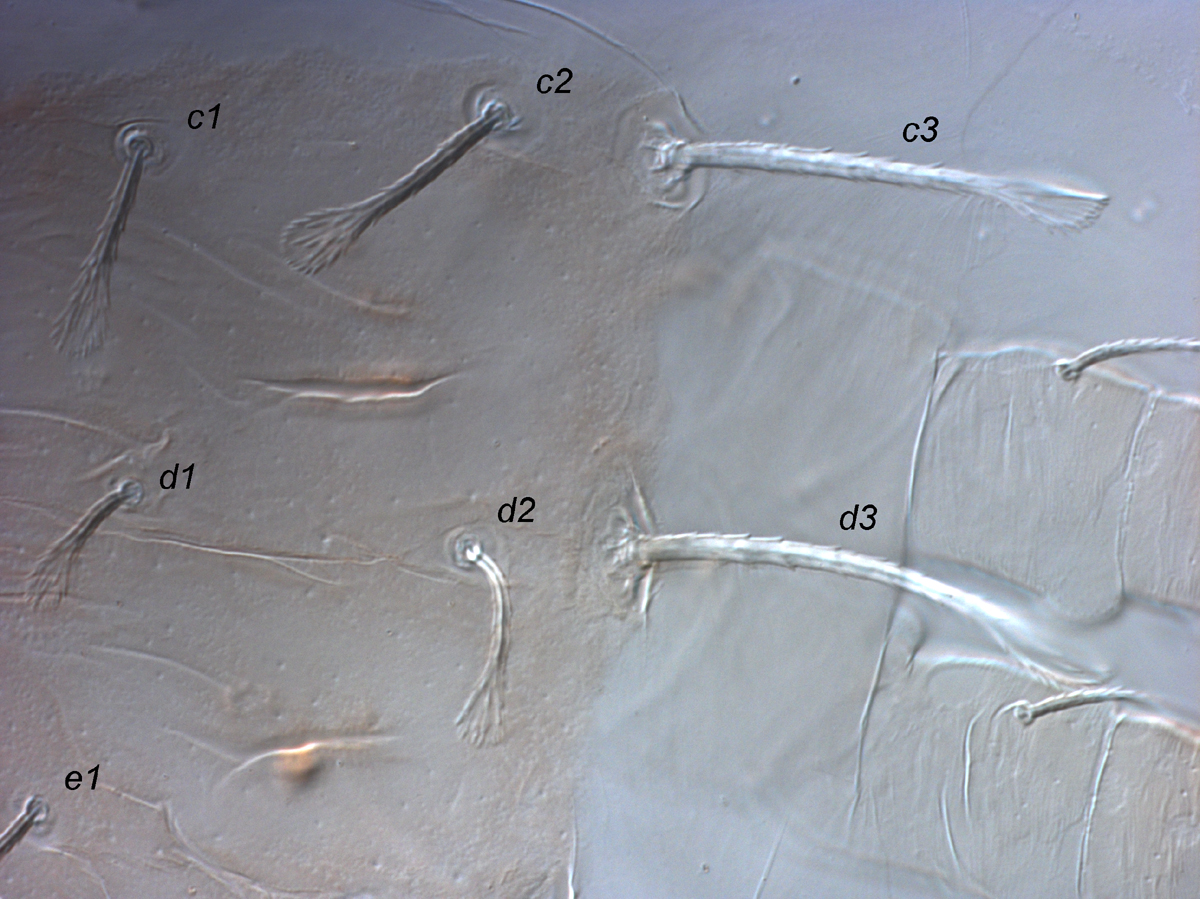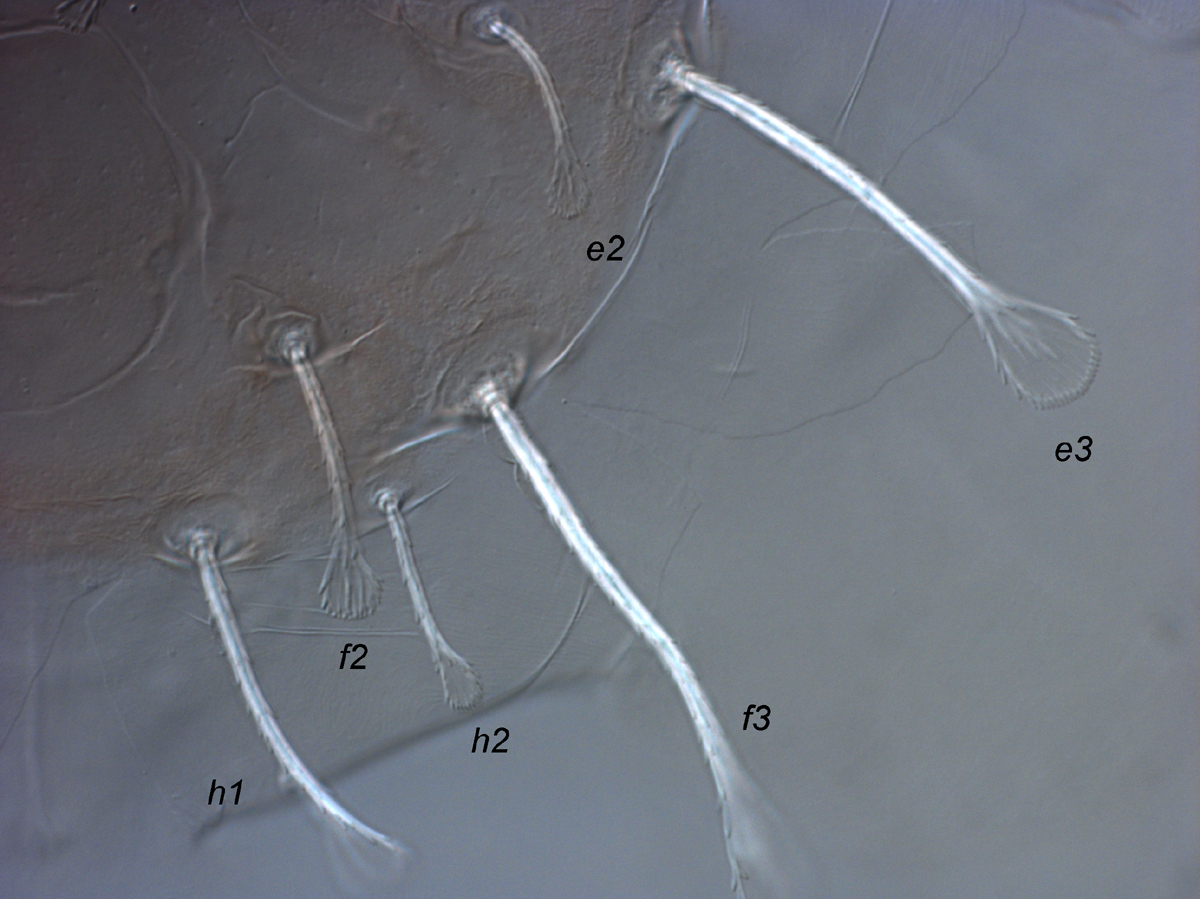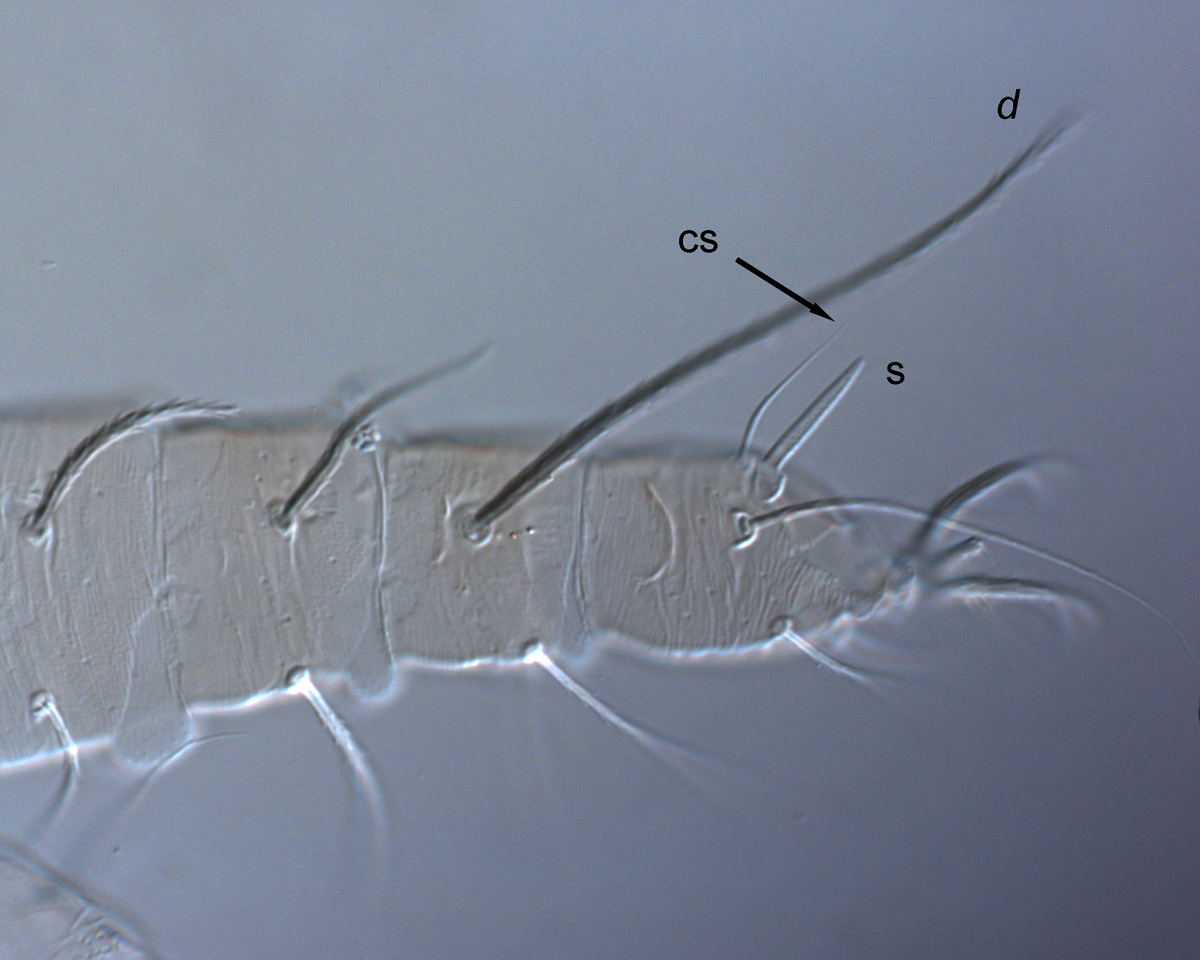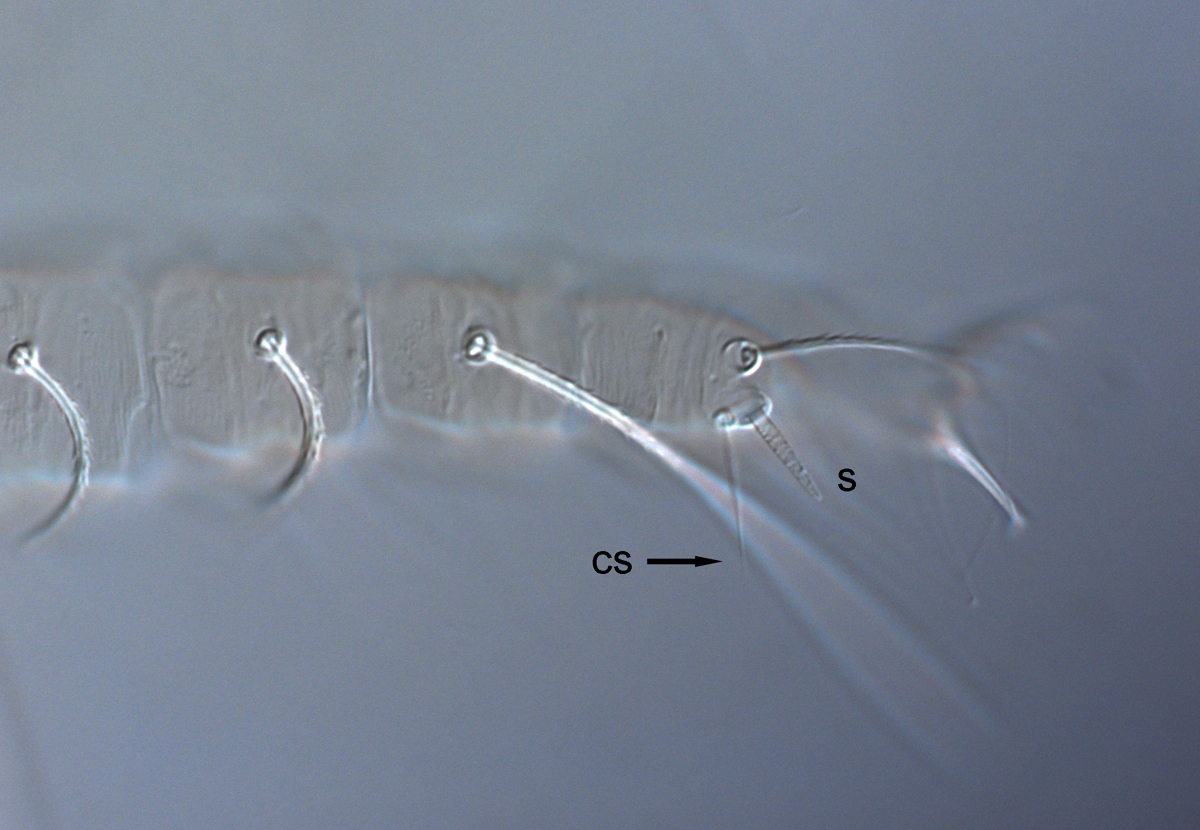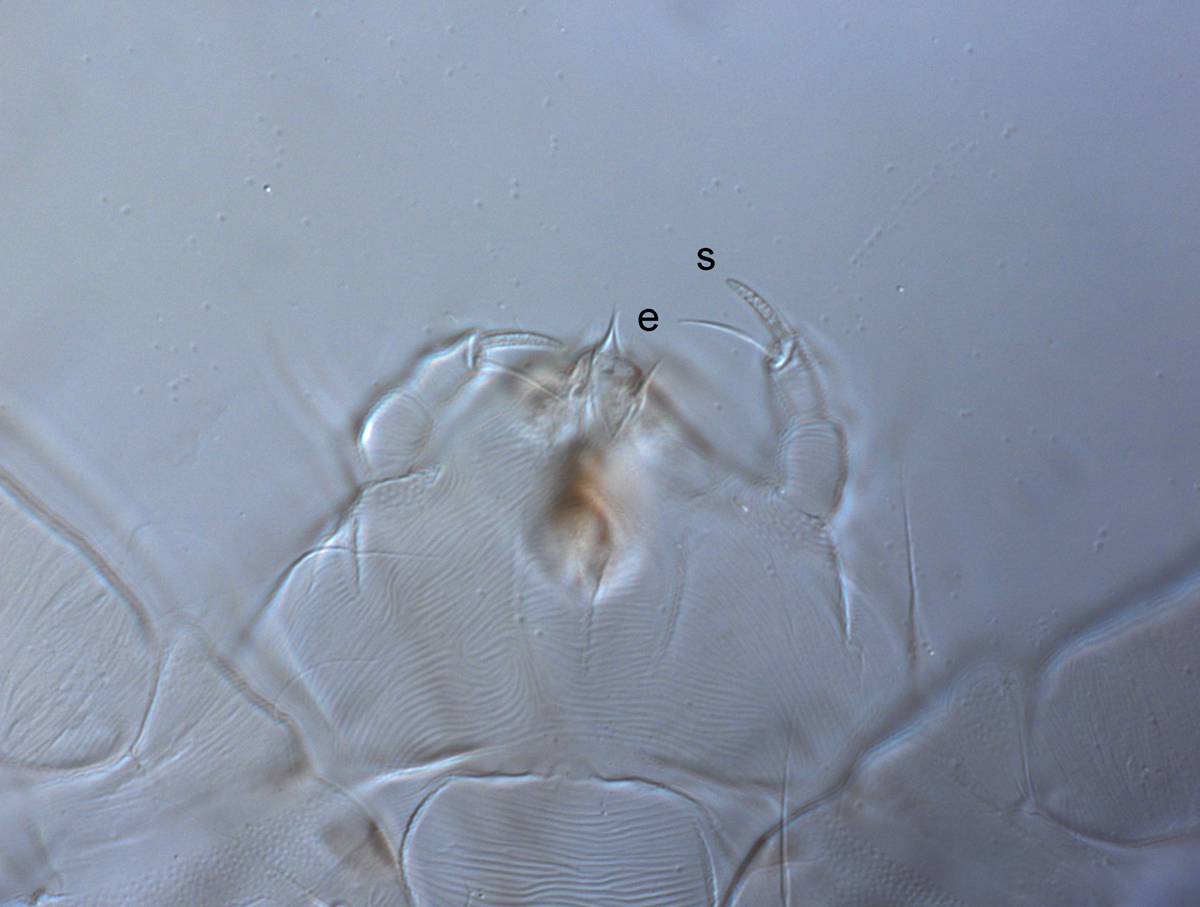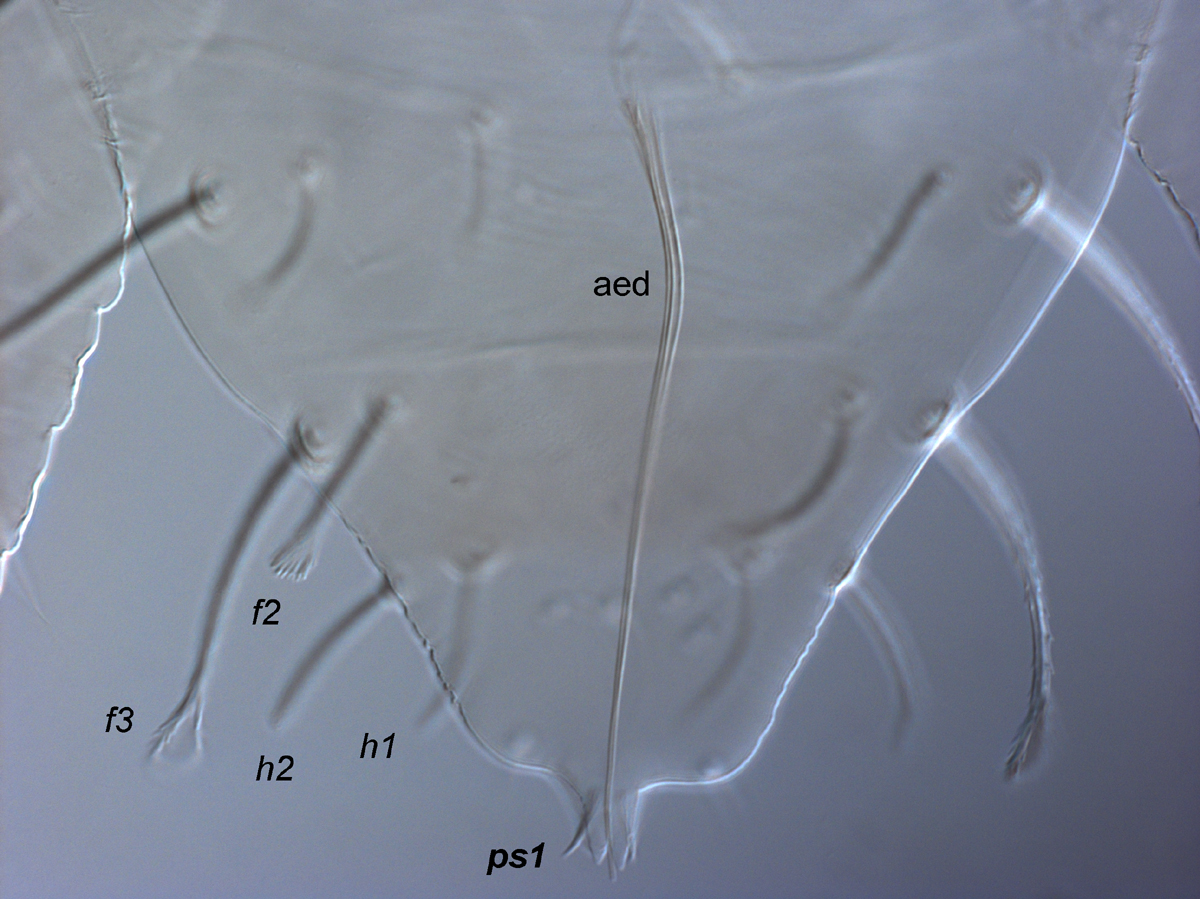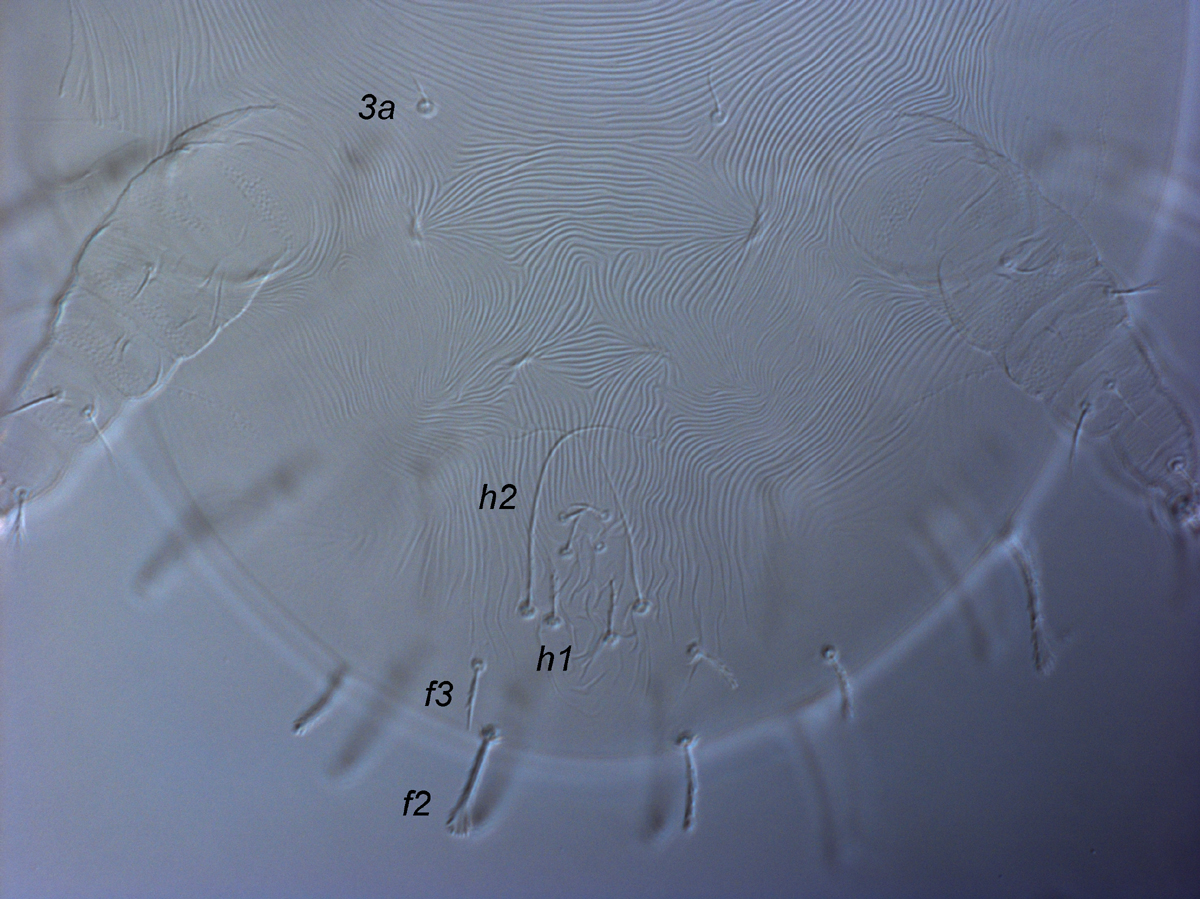Raoiella illyarrie
|
Fig. 1. Raoiella illyariie adult female (arrows indicating dorsal setae d on tibiae I-II). |
|
Fig. 2. Raoiella illyarrie adult female dorsum. |
|
Fig. 3. Raoiella illyarrie adult female central dorsum. |
|
Fig. 4. Raoiella illyarrie adult female anterior lateral opisthosoma. |
|
Fig. 5. Raoiella illyarrie adult female posterior dorsum. |
|
Fig. 6. Raoiella illyarrie adult female leg I (d = dorsal seta on tibia I, s = solenidion, cs = companion seta). |
|
Fig. 7. Raoiella illyarrie adult female leg II with solenidion and subequal companion seta subequal in length (d = dorsal seta on tibia II, s = solenidion, cs = companion seta). |
|
Fig. 8. Raoiella illyarrie adult female leg II with companion seta slightly longer than solenidion (s = solenidion, cs = companion seta). |
|
Fig. 9. Raoiella illyarrie adult female leg I indicating spatulate dorsal seta d on tibiae. |
|
Fig. 10. Raoiella illyarrie adult female palps (s = solenidion, e = eupathidium). |
|
Fig. 11. Raoiella illyarrie adult male opisthosoma indicating setae ps1 (aed = aedeagus). |
|
Fig. 12. Raoiella illyarrie larva, posterior venter, indicating elongate, filiform setae h2. |
Authority
Beard and Ochoa
Key characters
- setae c1, d1, e1 spatulate (Figs. 1-4)
- seta h1 longer than h2 (Fig. 5)
- seta h2 spatulate (Fig. 5)
- seta f2 obviously shorter than f3 (Fig. 5)
- coxae III-IV nude
- femur II with 3 setae (d, bv", v' present; l' absent)
- genua I-II with 3 setae (d, l', l")
- tarsus I with companion seta longer than solenidion, finely tapered, can appear subequal if fine tip is broken (Fig. 6)
- tarsus II with companion seta slightly longer than or subequal in length to solenidion (Figs. 7, 8)
- dorsal seta on tibiae I-II thick, with spatulate tip, sometimes with a tapered blunt tip (Figs. 6, 7, 9)
- palp tibiotarsus with one solenidion and one tapered, setiform eupathidium distally (Fig. 10), and one seta dorsally
- setae ps1 and ps2 inserted adjacent to each other
- male with short ps1 setae, 9-10 microns (Fig. 11)
- male femur II and genua I-II same as female
- larva with elongate, filiform setae h2 (Fig. 12)
Similar species
Raoiella illyarrie is morphologically similar to Raoiella crebra and R. hallingi.
Raoiella illyarrie: prodorsal setae sc1 30-47; seta d on tibiae I 74-81 and tibiae II 65-69; companion seta on tarsus I longer than solendion (make sure it is not broken). Male with one seta on trochanter IV.
Raoiella crebra: prodorsal setae sc1 28-31; seta d on tibiae I 58-65 and tibiae II 58-61; companion seta on tarsus I subequal or shorter than solenidion. Male with one seta on trochanter IV.
Raoiella hallingi: male with trochanter IV nude.
Distribution
Australia (WA)
Hosts
Illyarrie, Eucalyptus erythrocorys (Myrtaceae)
Remarks
This species is currently being described by Beard et al.
Grouped with Raoiella species 4A as species 4 in Dowling et al. (2012).
References
Beard et al. (2018); Dowling et al. (2012)

